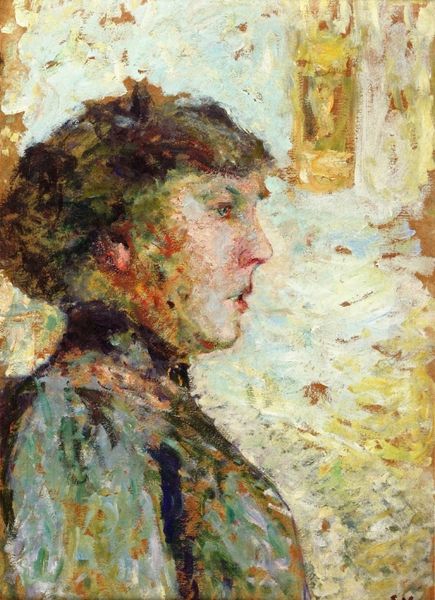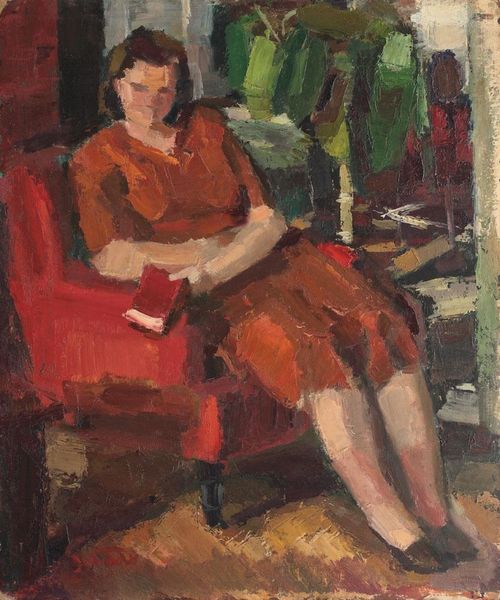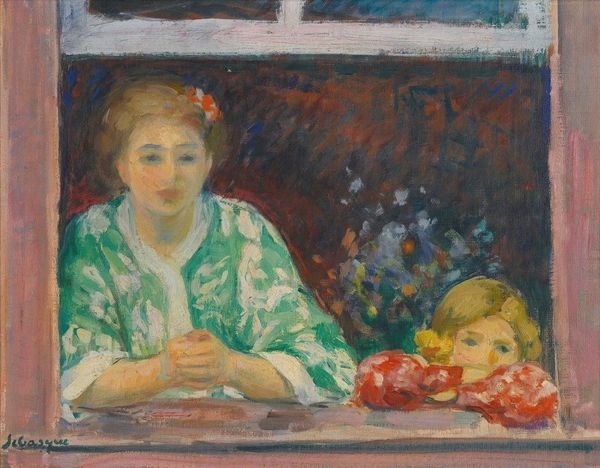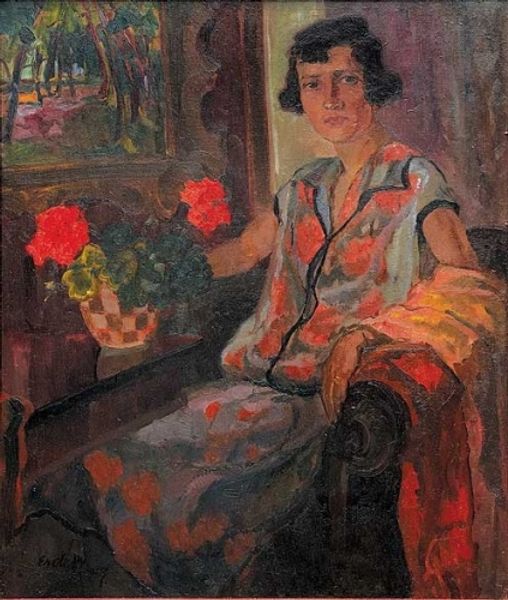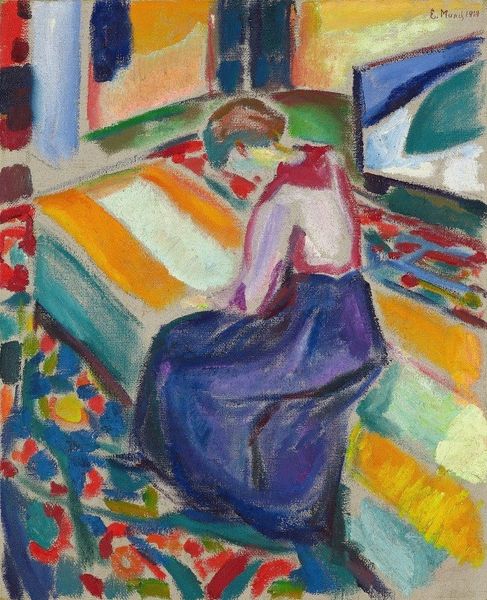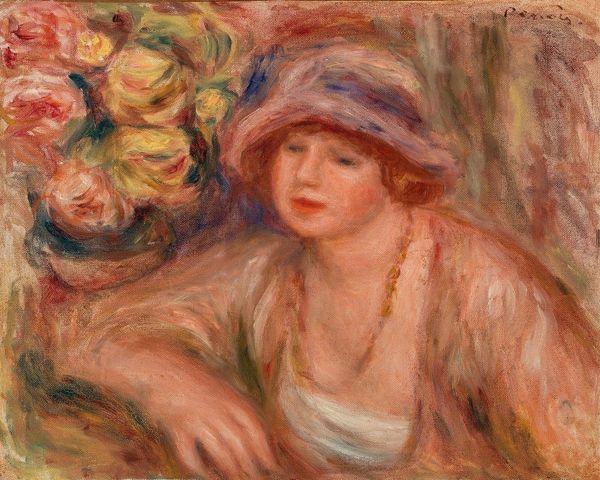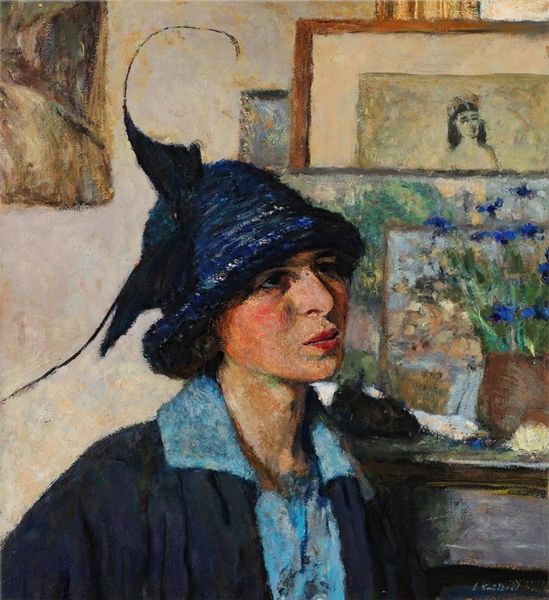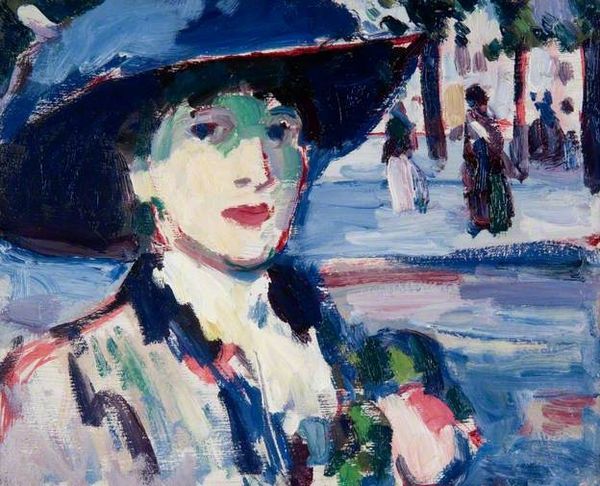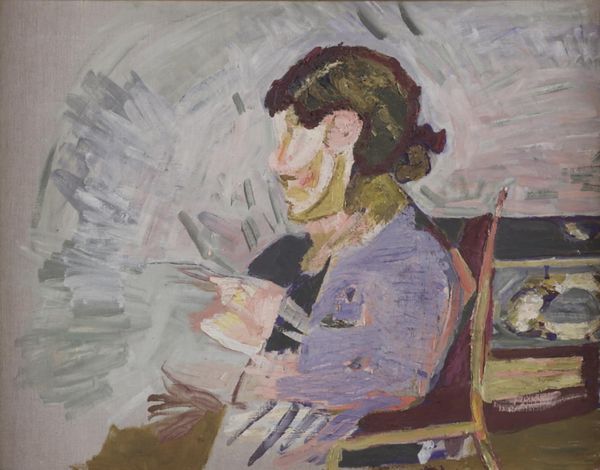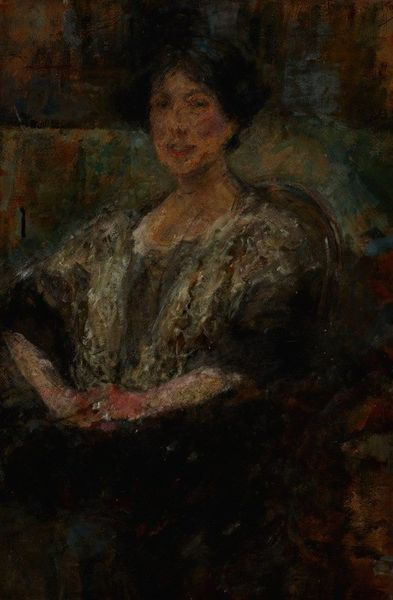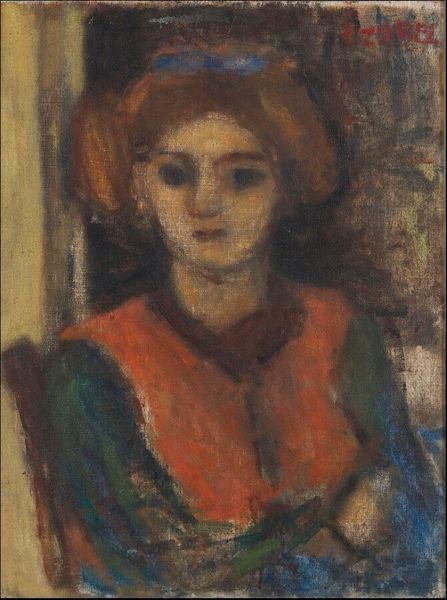
painting, oil-paint, impasto
#
portrait
#
painting
#
oil-paint
#
figuration
#
oil painting
#
impasto
#
expressionism
#
modernism
Copyright: Public domain
Editor: So, here we have Lesser Ury's "Lady in the Loge" from 1920, an oil painting with quite visible brushstrokes. The painting seems to capture a sense of quiet observation, perhaps a commentary on societal roles... What do you see in this piece, beyond the immediate portrait? Curator: I see a symbol of cultural performance, the theater within the theater. The loge isn't just a space; it's a stage where identities are carefully curated and displayed. Note the woman's profile—partially obscured, enigmatic. How much is genuine, and how much is carefully constructed for the audience, both within and outside the painting? Editor: That’s a really interesting point about the layers of performance. I hadn't considered the act of 'being seen' as so central. Does the style – that impasto, those visible strokes – play into this idea at all? Curator: Absolutely. The brushstrokes create a sense of immediacy, a fleeting moment captured. Yet, they also abstract the figure, turning her into an impression rather than a clear representation. Is Ury hinting at the artificiality of appearances? Consider, too, the muted palette—it speaks to a certain restrained elegance, but also perhaps to a deeper sense of melancholy or ennui characteristic of the post-war era. Does the lady appear entertained? Or trapped? Editor: Trapped is a strong word, but it resonates with the colors you point out. It feels like there's a real tension there between the glamour and something else, something darker... Curator: Precisely. And remember, symbols evolve. What might have been purely celebratory in an earlier era takes on a different valence in the 1920s, coloured by loss and disillusionment. Art Deco as cultural mourning, perhaps? Editor: I see that now. Thank you for revealing such a wealth of meaning. It really shows that this lady is more than just a lady at the theatre. Curator: Indeed. It encourages us to think about the unspoken narratives within the image, reflecting our own evolving understanding of culture and identity.
Comments
No comments
Be the first to comment and join the conversation on the ultimate creative platform.
